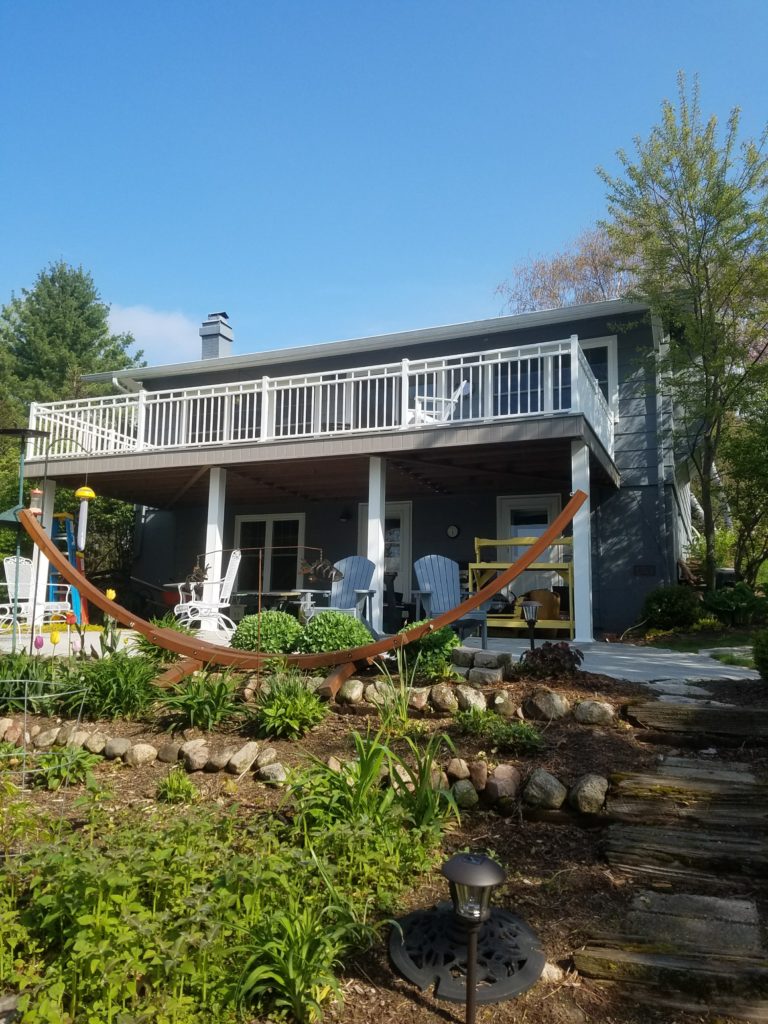A home deck is a home remodeling project with a lot of possibilities: grill outs, family dinners, morning coffee. Your deck should fit your family’s needs and wants, which is why we put together a list of home deck tips that can make your outdoor space a space you can enjoy and be proud to show off.
Needs & Wants
Before you start designing your deck, start by making a list of what you need and want on your deck. Do you want space for a table? A pergola for cover from the sun? Would you like a lounging area with a couch and chairs? A screened-in gazebo that keeps the bugs out and the relaxing in? Enough space for garden boxes and flower containers? Space for a firepit and benches?
As with any remodeling project, it’s easy for the list of wants and needs to far exceed the space available and budget. The next step is to break down the list and divide the wants and needs. What do you really, really need from the deck? If there isn’t enough space, it is possible to create a space that can do double-duty and choose furniture that can serve two purposes.
Size
Once you’ve prioritized your wants and needs, it’s time to decide on the size. The first step is to determine how much space is available and decide if you want to use the entire space or just part of it. Obviously, the larger the deck, the larger the cost.
Before you commit to a size, use stakes, tape, and spray paint (if possible) to see how big your new deck should be. If you need advice on how to add separate spaces or make a smaller space that can serve two purposes, ask your deck contractor for recommendations.
Materials & Maintenance
The material you choose for your deck determines the final cost, look, and long-term maintenance. In general, there are three options for deck material including:
Pressure-treated lumber
Pros: Durable, long-term deck material, typically the most affordable
Cons: May warp, requires long-term maintenance
Cedar
Pros: Durable, long-term deck material
Cons: Very soft and can be damaged, requires long-term maintenance, costs more than pressure-treated
Composite
Pros: Durable, very long-term deck material, comes in wide variety of colors (see local composite decking options available), requires NO maintenance
Cons: Most expensive decking material, not as easy to use for a do-it-yourself
Railings
Most decks require railings, especially multi-level or raised decks. There are typically three options for handrails and balusters: wood (pressure-treated or cedar), composite, and metal. Wood gives a uniform look to a deck, and is the most affordable. Composite railings are made of a similar material to the deck, and can be combined with aluminum and metal balusters.
The right deck railings depend on a number of factors, such as aesthetics, budget, and view. Different colored composite railings and balusters can enhance the look of the deck. On a wood deck, the railings can be stained a complementary color for a striking look.
Of the three options, wood is typically the most affordable for railings and balusters. Composite and metal railings are a close second and third, though composite is usually cheaper.
If you want to make the most of a great view, you should consider your options for balusters carefully. Cumbersome wood balusters can block the view, making metal or thinner balusters a better option.
Support
If the deck is raised or large, the deck supports should be a consideration. After all, a deck should be just as structurally sound as it should be attractive. There should be adequate footings supporting the deck, with even spacing.
In addition to being structurally sound, supports can also serve as a feature. Supports can be built to look like columns, making the deck look more prominent.
Stairs
Stairs are a necessary part of many decks, both for practical and for aesthetics. Stairways can be an easy way for you to get access to different parts of the yard or deck levels. They should be ergonomic and attractive, preventing guests from trips and falls and looking great while doing it. Stairs can be constructed of any decking material.
Deck Features
There are several features that can put a deck over-the-top. A deck can go from common to extraordinary with built-in lighting, pergolas, screens, gazebos, and speakers. Built-in lighting can be the perfect accent that provides a nice glow during nightly lounges. Pergolas and screens can provide cover from the hot sun and bugs. For a full list of options, ask your deck contractor for options that fit your needs and wants.
Knowledge & Time
The last factor to consider before deck building begins is whether you have the time and knowledge to build a strong and attractive deck. If you don’t, contact an experienced contractor to get a free quote and make your new deck the perfect space for you.

